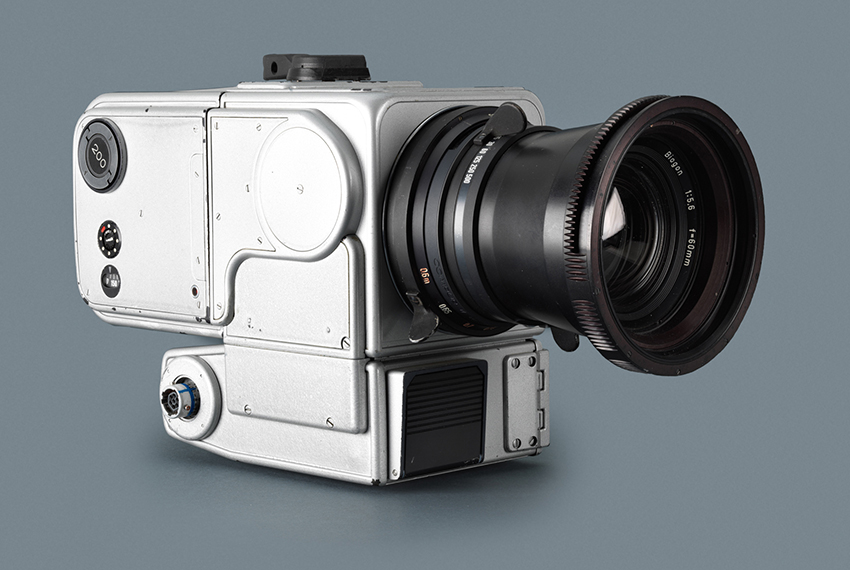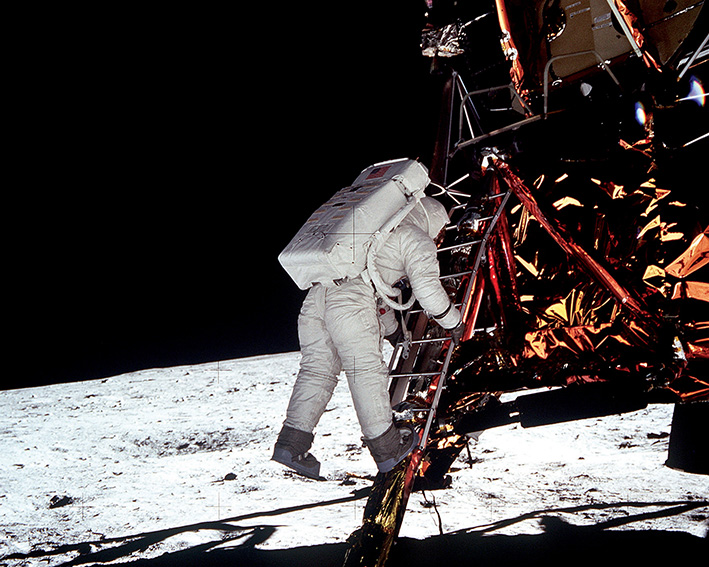Neil Armstrong (Apollo 11)

aka the Lunar Camera.
Photo courtesy Hasselblad
On 20 July 1969, astronauts Neil Armstrong and Edwin “Buzz” Aldrin became the first humans to set foot on another worldly body, when they landed on the Moon.
Armstrong carried a specially-developed motorised version of the Hasselblad Data Camera (HDT), known as the Lunar Camera. It included a modified film back that could accommodate over 200 photos on specially-developed Kodak Ektachrome film. The camera featured a Reseau plate, which superimposed crosses on each photo, so that NASA specialists could make measurements from them. The camera was also fitted with a 60mm wide-angle lens. To save on weight for the accent from the lunar surface, the camera body and lens, as well as a second camera and lens used only in the Lunar Module, were left behind on the Moon, with only the film backs brought back. Between the Apollo 11 and Apollo 17 missions, a total of 12 camera bodies and lenses were left on the Moon.
The resulting photos are some of the most iconic ever taken and represent an incredible human achievement: landing men on the moon only 63 years after the first successful powered flight.

There is an excellent video on Youtube describing the photos and some of the lesser-known facts behind them, HERE.
In the 1990s, Lothar Huber from Bond Colour Laboratories in Richmond, Melbourne, organised with NASA for ten of these photos to be available for an exhibition, celebrating the first Moon landing. After months of correspondence with NASA, Lothar was able to obtain high-resolution scans from the original transparencies. These were then printed by Bond Colour to 1m x 1m in size, and mounted on 3mm Dibond archival board.
These days, many hundreds of photos are available, royalty-free, from NASA’s website, but only of a quality to reproduce to about A4-size. The Bond Colour 1m x 1m prints are a rare opportunity to purchase such large prints of these iconic images. Some of the prints have already been sold, but you can still get your hands on one or more prints by clicking on the below button.

